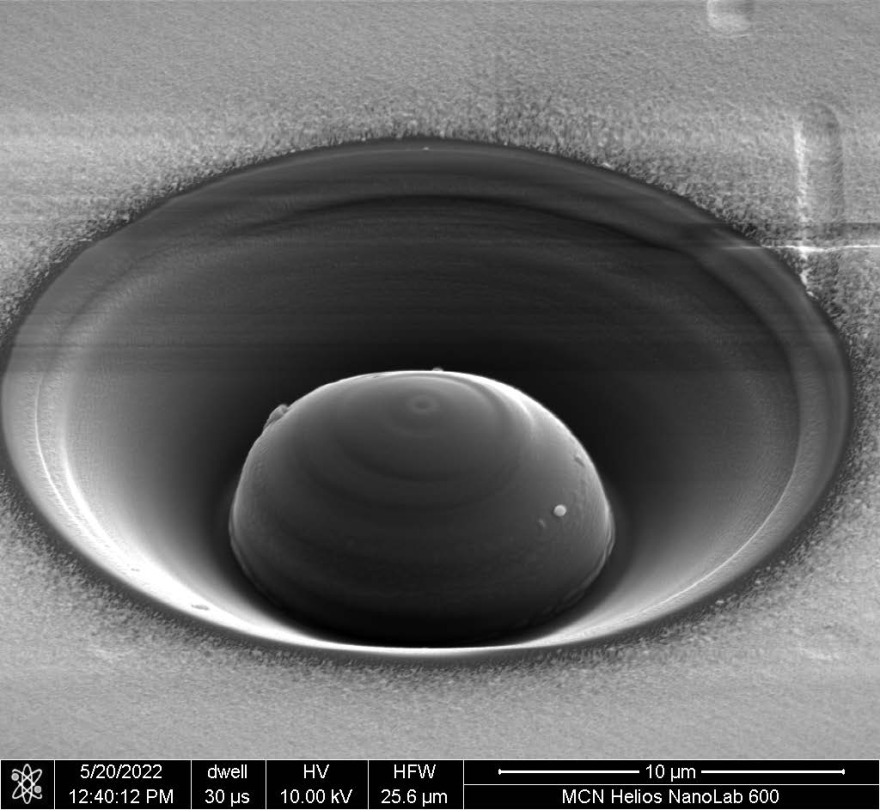The Australian/German company Quantum Brilliance is developing powerful quantum accelerators that will integrate into today’s computer systems, creating faster, more powerful hybrid technology to meet the computing challenges of tomorrow.
Rather than trying to replace supercomputers, Quantum Brilliance’s goal is to make quantum computing an everyday technology, with hardware that works in coordination with our current technology to overcome the limitations of our classical computers. Quantum Brilliance’s quantum accelerators are based on diamond and work at room temperature, undercutting and outperforming today’s huge, cryo-cooled, quantum supercomputers. Their quantum accelerators currently fit in a standard 19-inch server rack, and soon they’ll be small enough for mobile devices.

Key to their diamond quantum computer are defects called vacancies created in the diamond, points in the lattice where a carbon atom is missing. By substituting nitrogen atoms into the lattice next to these vacancies, nitrogen-vacancy (NV) centres are created within the diamond’s structure.
Each processor node is comprised of a single NV centre and a surrounding cluster of atoms: the nitrogen itself and up to 4 nearby carbons. Within that cluster, the nucleus of each atom spins (rotates), and the nuclear spins of 14N and 13C atoms act as qubits. The electronic spin of the NV centre acts as a quantum bus, controlling the initialization and readout of the qubits surrounding the NV and connecting their behaviour to other parts of the computer’s architecture.
Quantum computation is controlled via external energy inputs such as radiofrequency, microwave, optical and magnetic fields. Absorbance of green light elevates the nuclear spin to an excited, higher-energy state. Relaxation of that spin back to a more stable, lower-energy state leads to the emission of red light, a phenomenon called fluorescence. This fluorescence signal provides an optical readout, or visual data record, from the qubit.
A critical parameter for NV centre initialization and readout fidelity is the detection rate of fluorescence photons released from the NV. Diamond has a much higher refractive index than the surrounding air, so emitted photons become trapped within the diamond lattice and can’t escape easily. Total internal reflection at flat diamond-air interfaces confines and traps most of the NV fluorescence inside the diamond.
One promising path toward fixing this problem is to texture the diamond with micro-scale patterns to improve the light extraction efficiency. Dr Vivek Raj Shrestha, an optics and nanofabrication engineer at Quantum Brilliance, has created micro-optic structures on diamond including microscopic half-spheres and parabolic mirrors to enhance the extraction efficiency of light from the NV centres. Increasing the light extraction efficiency increases the fraction of emitted power that escapes to the air (or into a desired solid angle), providing higher-fidelity readout from qubits.
Dr Shrestha harnessed the focused ion milling capabilities at Melbourne Centre for Nanofabrication (MCN) and ANFF-ACT to develop a manufacturing process for creating such microscopic structures in diamond at the precise locations of NV centres pre-determined using Quantum Brilliance’s home-built confocal microscopy set-up.
Quantum Brilliance’s ability to manufacture miniaturised diamond qubits in a precise and replicable process and to optimise the control structures for qubit initiation and readout are propelling this company to the forefront of quantum computing hardware design. Integration of quantum accelerators with existing architecture will bring the benefits of quantum computing more quickly into industries that impact our daily lives like pharmacological drug development, battery electrode development and energy generation, machine learning, and AI.
